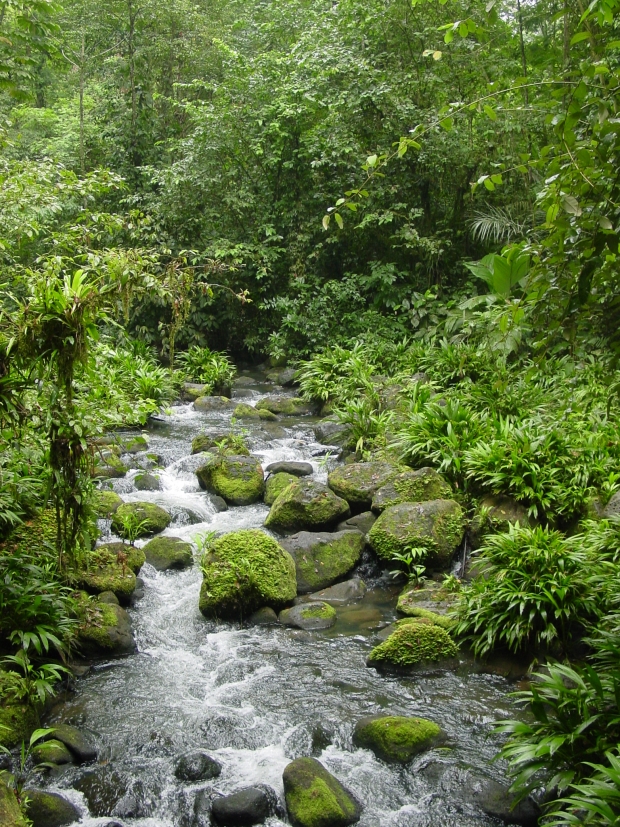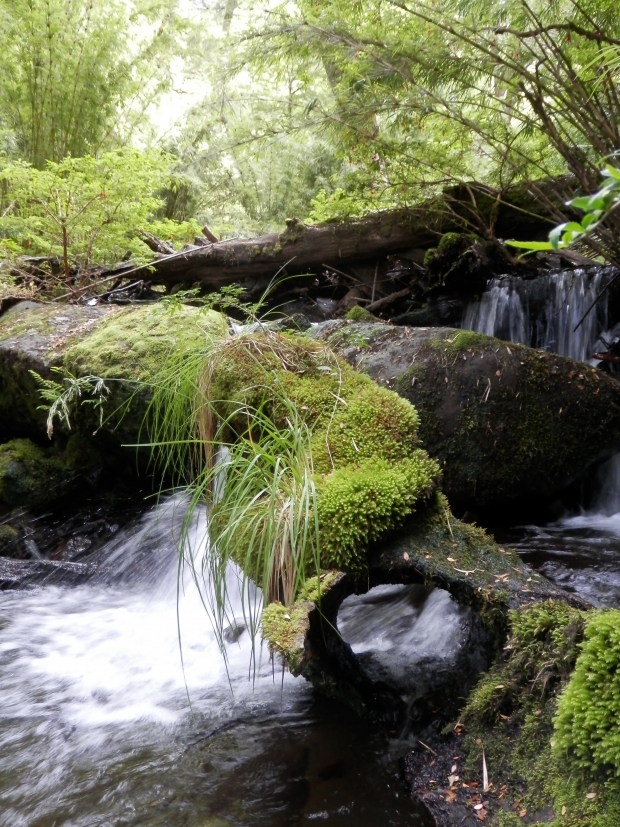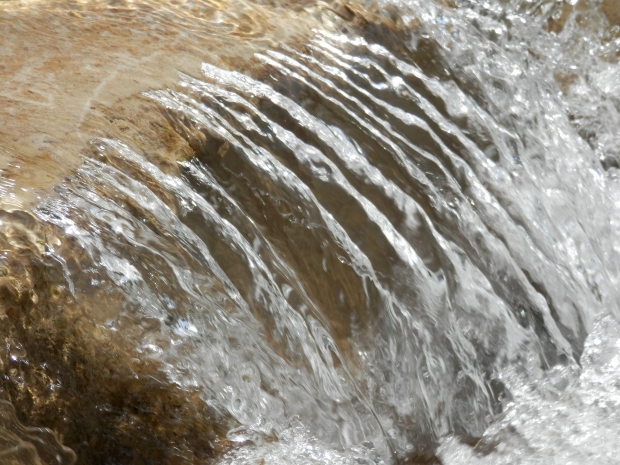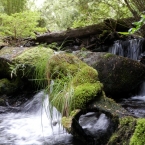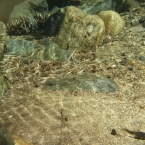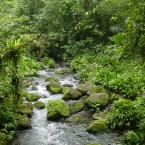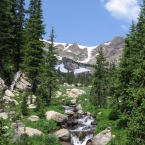For I Will Consider Small Streams: A Poetic Essay
For I will consider small streams.
For small streams make up 70 to 80% of the length of the world’s rivers.
For size matters, but not in the way some might think.
For a stream may be small in size yet great in effect.
For small streams are the entry point of fine sediment and contaminants moving downslope into rivers.
For the ability of small streams to store or transmit these materials strongly influences water quality throughout river networks.
For small streams provide unique habitats.
For salamanders and fish travel to small streams in their seasons and stages of life, seeking refuge from floods and extreme temperatures, or from competitors and predators.
For small streams send forth colonists to downstream regions, such as eels and juvenile salmon swimming relentlessly to the sea.
For insects emerging from small streams drift downriver and feed fish, or fly into the neighboring forest and feed songbirds.
For small streams provide pathways of travel through the landscape for the gilled creatures, from larval insects to amphibians to fish.
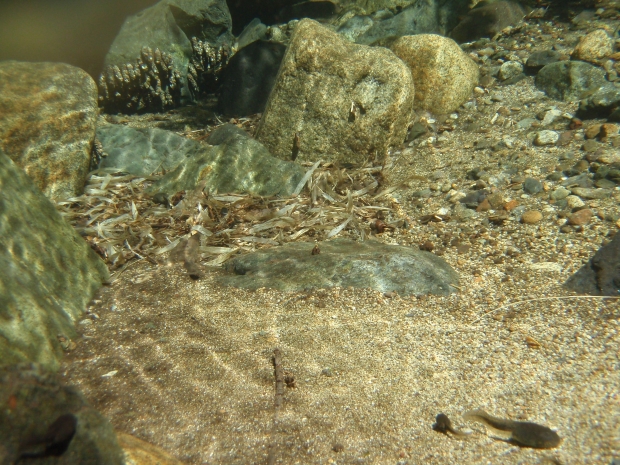
For even small streams that remain mostly dry can host a wealth of unique and wondrous life.
For a small stream born at a seep in the desert is a magnet with an enormous invisible field, providing sustenance to creatures that fly or walk.
For we know so little of small streams, even as we obliterate them.
For we have no complete species list for any headwater stream in the United States.
For the Breitenbach, a German stream only one meter wide, contains 1,044 invertebrate species.
For invertebrates are the largely invisible but ecologically crucial tiny creatures that inhabit streams: insects, crustaceans and mollusks.
For small streams are beautiful and comprehensible, and we must have beauty and comprehension in the world.
For small streams in forests catch and store bits of leaves and pine needles.
For microbes and insects feed upon these bits of dead plants.
For elfin, emerald gardens of algae and mosses grow in the clear water of small streams.
For microbes and insects feed upon the algae and bryophytes.
For fish and birds and other creatures feed upon the insects.
For a beaver can found a colony upon a small forest stream.
For an ouzel can speed with equal agility between air and water in a small mountain stream.
For a shrimp the size of a lobster can climb rock waterfalls in a small tropical stream.
For mayflies dance like fairies in the early morning mist of small streams.
For torpid trout can wait out a long winter deep beneath the ice of a small stream.
For we are not kind to small streams.
For we bury them beneath the remains of decapitated mountains.
For we encase them in pipes in both cities and farmlands.
For we plow over them, drain them and ditch them to resemble canals.
For we pump the groundwater from beneath them, leaving them parched.
For we chop them into fragments with culverts, dams and water intakes.
For the small, tough fish in small streams of the shortgrass prairie can withstand everything nature can throw at them.
For these same fish cannot leap up a waterfall many times their body length at the downstream end of a culvert.
For all the king’s horses and all the king’s men cannot put a small stream together again.
For we rip out the trees and shrubs that shade and cool the water of small streams.
For a river network seen on a map resembles a branching tree.
For to destroy the small streams is to rip off the leaves and branches of the tree until all that remains is a barren trunk.
For Robert Frost knew that to bury a small stream may give rise to thoughts that keep us from work and sleep.
For small streams are not navigable, but they most certainly are a nexus to many things.
For a nexus is a connection or series of connections linking two or more things.
For small streams in which a waterfall limits the connection to downstream waters, and can provide a refuge for endangered native species.
For small streams in which a logjam connects the stream, and the floodplain can slow the waters of a flood.
For small streams in which pools and riffles connect the stream to the underlying sediment, and can host microbes that remove nitrate from the water.
For small streams may be the most endangered river ecosystems because we ignore and abuse them.
For to void the Stream Protection Rule is to act from ignorance and greed and to harm the people who drink the water of streams, which is all of us.
For one can reasonably ask, if it’s small enough to step across, does it count?
For the answer is most emphatically yes.
For river scientists know the importance of small streams.
For those with a reverence for the natural world understand that even the smallest cogs and wheels can be vitally important.
With appreciation to Christopher Smart and Mary Oliver for inspiring the form of this essay and to John Calderazzo for critical comments.
Ellen Wohl is a professor of geology at Colorado State University. Her research focuses on rivers and current projects including investigating organic carbon storage in river channels and floodplains of western North America. She has written several books on rivers and natural environments, including the recent “Rhythms of Change in Rocky Mountain National Park” (University Press of Kansas, 2016). She has been a fan of small streams since childhood.
References
Alexander RB, Boyer EW, Smith RA, Schwartz GE, Moore RB 2007). The role of headwater streams in downstream water quality. Journal of the American Water Resources Association, 43: 41-59.
Arthington AH, Bernardo JM, Ilheu M (2014). Temporary rivers: linking ecohydrology, ecological quality and reconciliation ecology. River Research and Applications, 30: 1209-1215.
Baxter C V, Fausch K D, Saunders W C (2005). Tangled webs: reciprocal flows of invertebrate prey link streams and riparian zones. Freshwater Biology, 50: 201-220.
Bernhardt E S, Palmer M A (2011). The environmental costs of mountaintop mining valley fill operations for aquatic ecosystems of the Central Appalachians. The Year in Ecology and Conservation Biology, 1223: 39-57.
Dodds W K, Oakes R M (2008). Headwater influences on downstream water quality. Environmental Management, 41: 367-377.
Downing J A, Cole J J, Duarte C M, Middelburg J J, Melack J M, Prairie Y T, Kortelainen P, Striegl R G, McDowell W H, Tranvik L J (2012). Global abundance and size distribution of streams and rivers. Inland Waters, 2: 229-236.
Elmore A J, Kaushal S S (2008). Disappearing headwaters: patterns of stream burial due to urbanization. Frontiers in Ecology and the Environment, 6: 308-312.
Falke J A, Fausch K D, Magelky R, Aldred A, Durnford D S, Riley L K, Oad R (2011). The role of groundwater pumping and drought in shaping ecological futures for stream fishes in a dryland river basin of the western Great Plains, USA. Ecohydrology, 4: 682-697.
Freeman M C, Pringle C M, Jackson C R (2007). Hydrologic connectivity and the contribution of stream headwaters to ecological integrity at regional scales. Journal of the American Water Resources Association, 43: 5-14.
Leibowitz S G, Wigington P J, Rains M C, Downing D M (2008). Non-navigable streams and adjacent wetlands: addressing science needs following the Supreme Court’s Rapanos decision. Frontiers in Ecology and the Environment, 6: 364-371.
Meyer J L, Strayer D L, Wallace J B, Eggert S L, Helfman G S, Leonard N E (2007a). The contribution of headwater streams to biodiversity in river networks. Journal of the American Water Resources Association, 43: 86-103.
Meyer JL, Kaplan LA, Newbold D, Woltemade CJ, Zedler JB, Beilfuss R, Carpenter Q, Semlitsch R, Watzin MC, Zedler PH (2007b). Where rivers are born: the scientific imperative for defending small streams and wetlands. Sierra Club, San Francisco, CA.
Nadeau T-L, Rains M C (2007). Hydrological connectivity between headwater streams and downstream waters: how science can inform policy. Journal of the American Water Resources Association, 43: 118-133.
Peterson B J, Wollheim W M, Mulholland P J, Webster J R, Meyer J L, Tank J L, Marti E, Bowden W B, Valett H M, Hershey A E, McDowell W H, Dodds W K, Hamilton S K, Gregory S, Morrall D D (2001). Control of nitrogen export from watersheds by headwater streams. Science, 292: 86-90.
Wipfli M S, Gregovich D P (2002). Export of invertebrates and detritus from fishless headwater streams in southeastern Alaska: implications for downstream salmonid production. Freshwater Biology, 47: 957-969.
Wohl E (in press). The significance of small streams. Frontiers of Earth Science.

